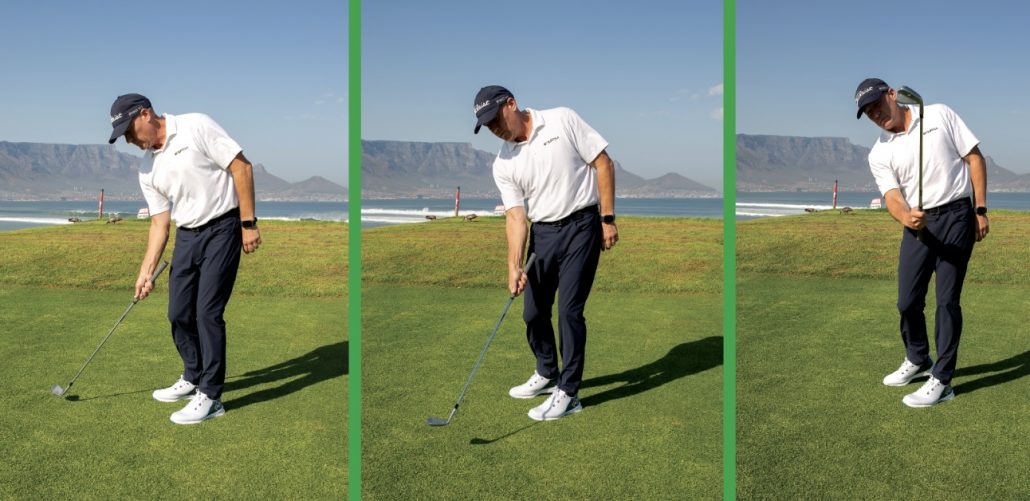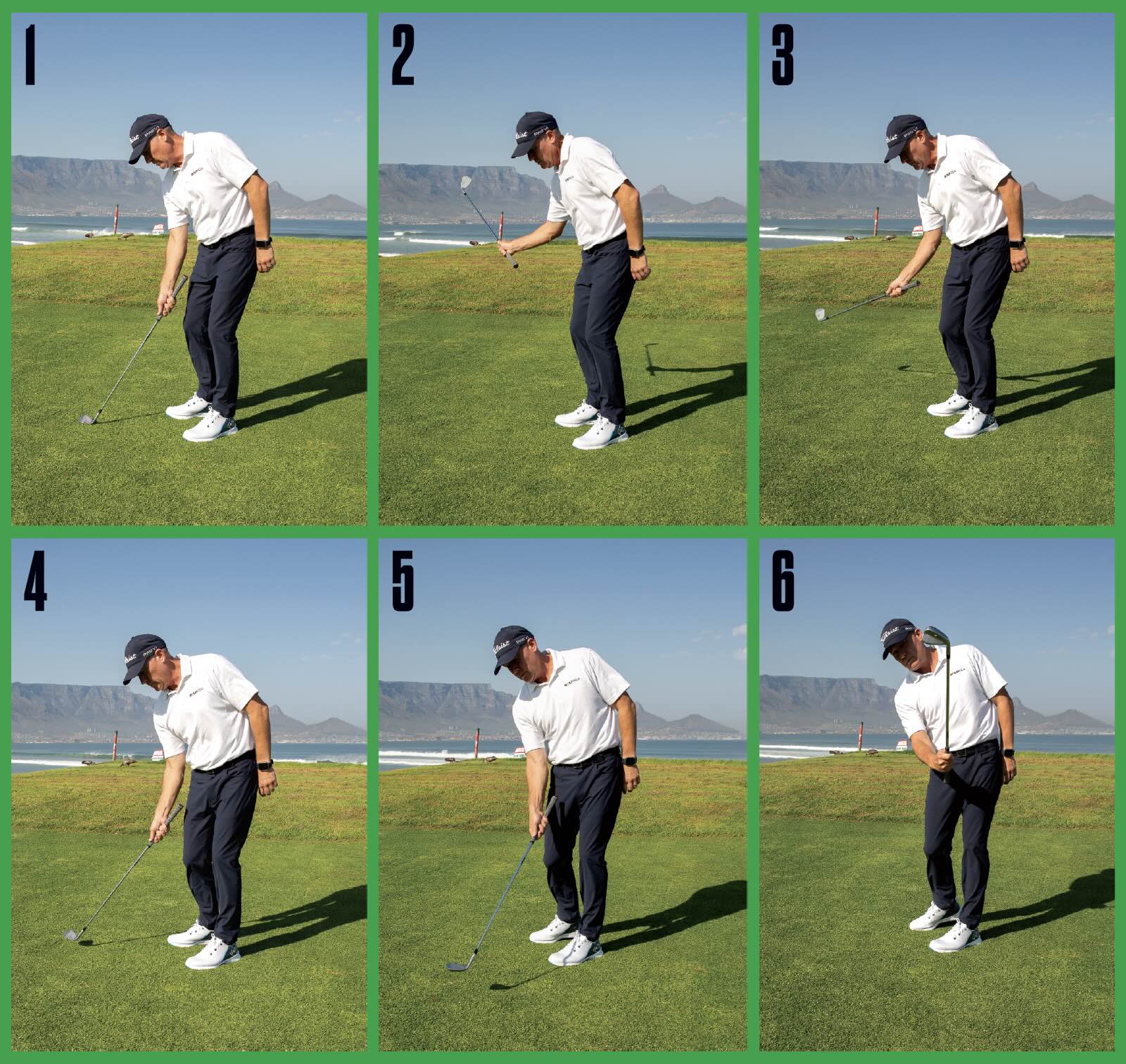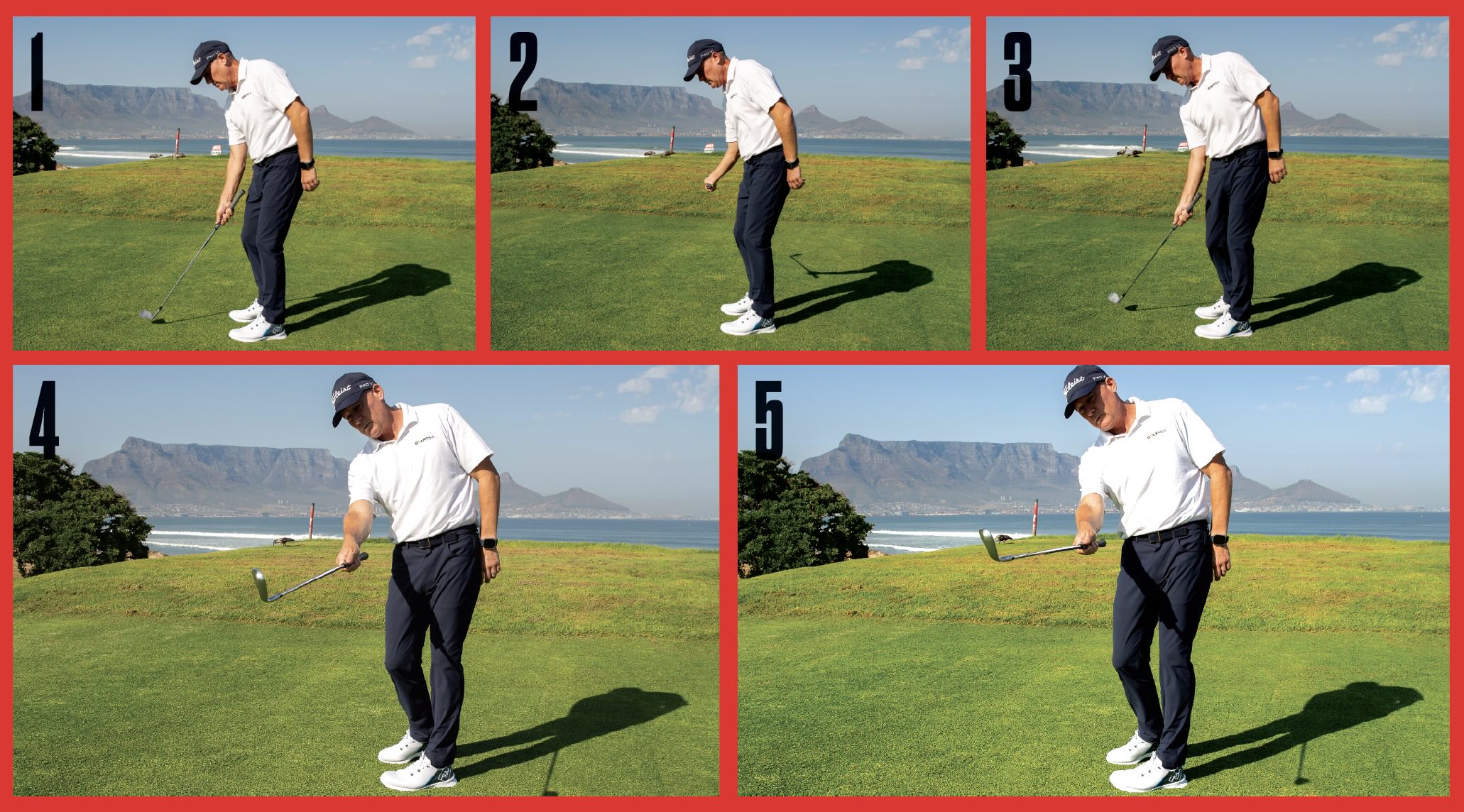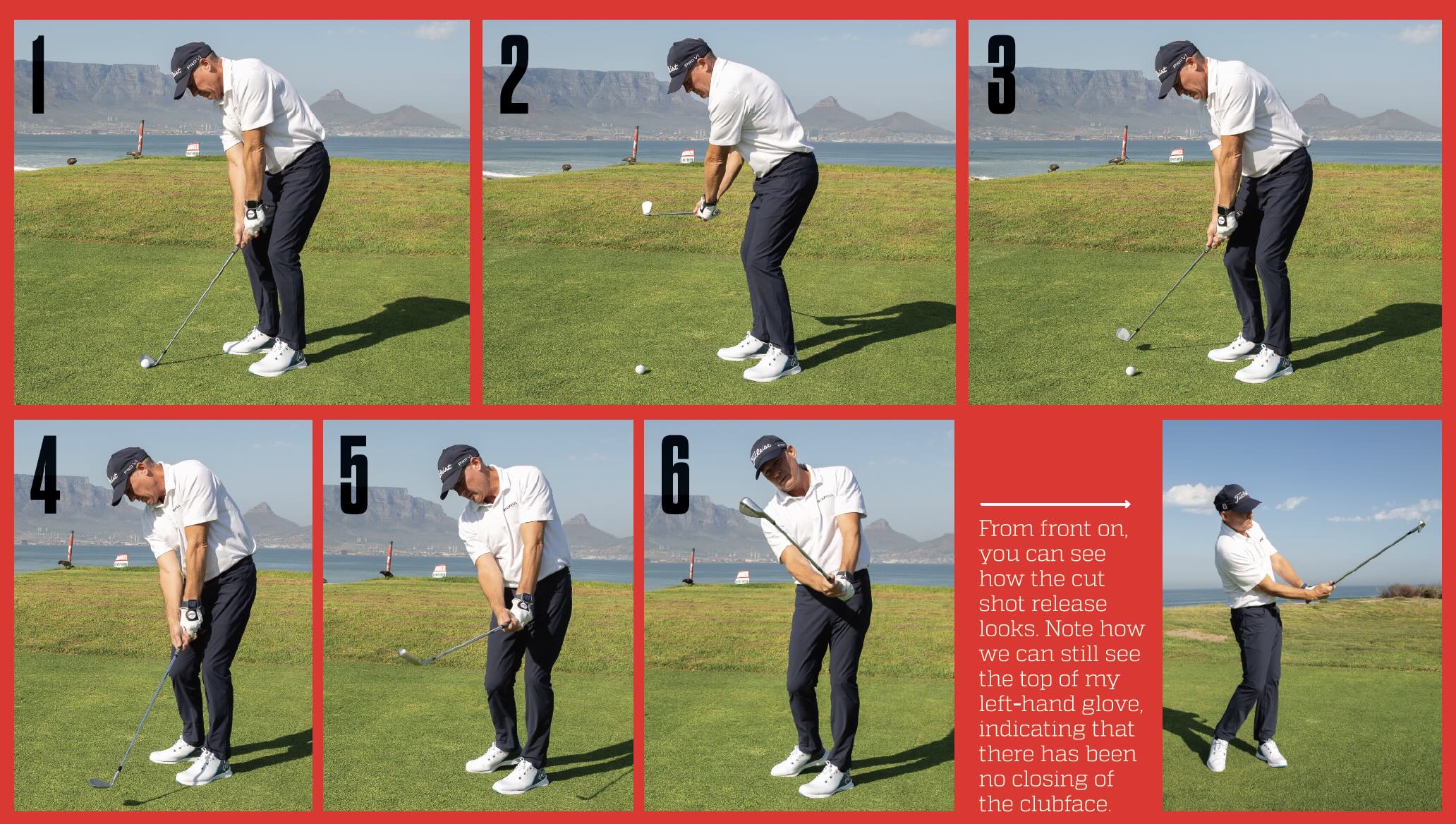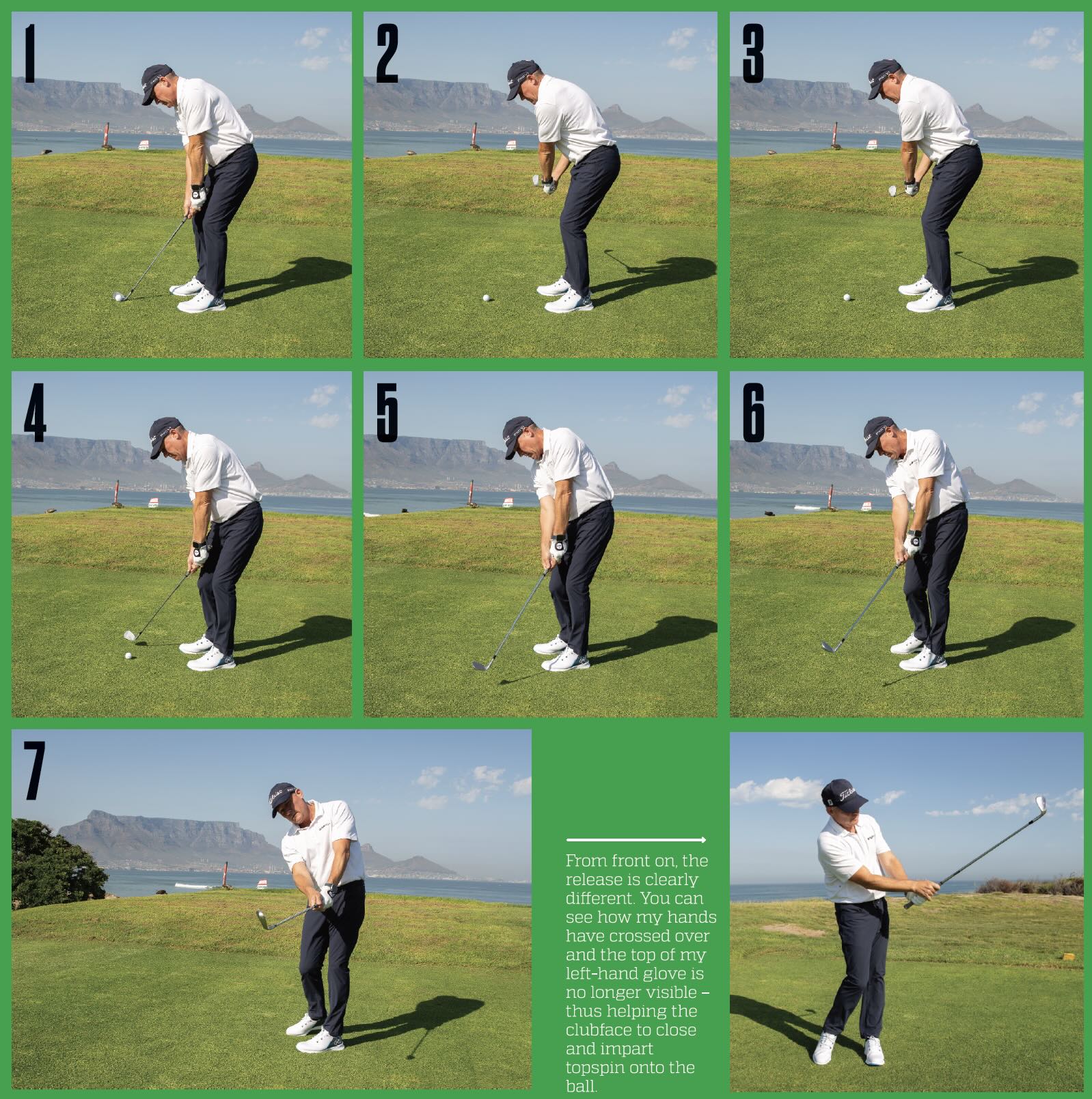Different circumstances call for different shots, particularly when it comes to chipping around the green, explains PGA professional GRANT HEPBURN.
There are many different situations you’ll find yourself in when you’re just off the putting surface. So it helps to have a couple of shots in your armoury and then know when to use them. In this tip, I’ll talk about the difference between playing a low, running chip shot and a chip shot that flies higher and stops quickly.
Visually, it helps to think of the low, running chip shot as being similar to a topspin forehand in tennis. The high, floaty shot is more like a sliced forehand in tennis – almost like a drop shot that barely makes it over the net and then dies.
The key is knowing when to play each shot. The high shot tends to be a higher-risk, higher-reward shot, whereas the low runner is a percentage shot that is less likely to get you into trouble. However, there may be times when the situation calls for a certain shot, such as when you have short-sided yourself, or need to carry a hazard.
Fly it high
In this sequence, I’m swinging one-handed to demonstrate the similarity of the golf stroke to a sliced tennis forehand. For the high, spinning chip shot, note how I have set up with my clubface open, as well as my stance.
Now I try to replicate a tennis shot, where the racquet/club travels out on the way back and then down and across the ball, swinging to the left on the way through. The key is that the release is done in the same way that you would hit a cut shot in tennis. The face is kept open and you will notice how I rehinge my wrist in such a way as to keep the face open. That open clubface, with all of that loft, cuts across the ball to create a high, spinning shot.
Run it low
For a running chip shot, start by setting up with a square clubface, as well as a square stance. I then simulate this shot to be similar to a one-handed topspin forehand in tennis. I swing back more around my body and then release the club with my right hand in a similar way to what I would if I were hitting a topspin shot in tennis.
Once I have these two different feels, I try to replicate that with both hands on the club. I once again set up with an open clubface and an open stance. This enables me to swing back and through on an ‘out-to-in’ path, enabling me to cut across the ball with an open clubface. Note the followthrough and release being the same as the cut shot in tennis.
From front on, you can see how the cut shot release looks. Note how we can still see the top of my left-hand glove, indicating that there has been no closing of the clubface.
In the bump-and-run shot, I set up more squarely, with a square clubface. This promotes a takeaway along the inside and a release of the club down the line to the target, with a topspin release, as described in the tennis shot. You will see how the path of the club is different and the release is very different to the cut shot. One should feel like the clubface has rotated to a more closed position, as it does in a topspin tennis shot.
From front on, the release is clearly different. You can see how my hands have crossed over and the top of my left-hand glove is no longer visible – thus helping the clubface to close and impart topspin onto the ball.
– This article first appeared in the March 2024 issue of Compleat Golfer magazine.


